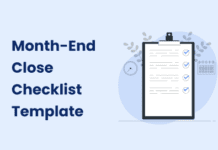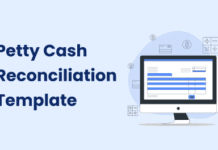For procurement teams across the world, one constant remains: the need for reliable vendors. Whether it’s for goods or services, a dependable supplier can be the difference between operational success and logistical nightmares.
However, finding a reliable vendor can often feel like looking for a needle in a haystack, especially without a well-defined procurement method. The procurement process is much more than just purchasing—it involves strategic planning, decision-making, risk management, and relationship building.
In this article, we will delve into six common procurement methods, understand the need for a procurement method, and offer best practices for choosing the most reliable vendors.
What Is Procurement Method?
The procurement method refers to the process or strategy by which organizations acquire goods, services, or works from external sources. It involves the identification of needs, sourcing suppliers, negotiating terms, and finalizing agreements. The choice of a procurement method depends on various factors such as the nature of the goods or services, the complexity of the project, budget constraints, and the level of risk involved.
Importance of Implementing a Procurement Method
The selection and implementation of appropriate procurement methods are crucial for the procurement team for several reasons:
Cost Efficiency: Different procurement methods can have varying cost implications. Choosing the right method can help organizations obtain goods and services at competitive prices, ensuring cost efficiency and effective budget management.
Risk Mitigation: Procurement methods play a key role in managing and mitigating risks associated with external sourcing. For instance, a well-structured process can help identify and evaluate potential risks, allowing organizations to make informed decisions.
Quality Assurance: The procurement method chosen influences the quality of goods or services acquired. Rigorous methods such as detailed specifications in tender documents or negotiated agreements can help ensure that the purchased items meet the required standards.
Compliance and Transparency: Many organizations, especially those in the public sector, are required to adhere to legal and regulatory frameworks. Properly chosen procurement methods contribute to compliance with these regulations and enhance transparency in the procurement process.
Time Management: Different procurement methods have varying timelines. For time-sensitive projects, selecting a procurement method that allows for efficient and swift sourcing can be critical to project success.
Vendor Relationship Management: The chosen procurement method affects the relationship between the organization and its suppliers. Establishing effective relationships with suppliers is essential for ongoing success, and the procurement method can impact the dynamics of these relationships.
Financial Planning and Forecasting: Procurement methods contribute to financial planning and forecasting by providing a structured approach to estimating and allocating costs associated with acquiring goods or services.
Project Success: Ultimately, the success of projects often depends on effective procurement methods. Choosing the right approach ensures that the organization acquires the necessary resources in a timely and cost-effective manner, contributing to overall project success.
6 Procurement Methods You Need to Know to Secure the Best Vendor
1) Open Tendering
Open tendering is a procurement method where an open invitation is published for suppliers to bid on a specific contract. It promotes transparency and competition, reducing the risk of bias or favoritism. However, it can be time-consuming due to the number of bids to evaluate.
2) Restricted Tendering
Restricted tendering, also known as selective tendering, involves inviting only pre-selected suppliers to bid. This method saves time and resources as only vendors with proven capabilities are involved, but it may limit the competition and potential innovation.
3) Request for Proposals (RFP)
An RFP is a method where a detailed document is issued, outlining the business requirements and project specifics. Suppliers then submit proposals demonstrating how they can meet these requirements and at what cost. This method is useful for complex projects requiring specialized skills.
4) Two-Stage Tendering
Two-stage tendering is a process where suppliers first submit technical proposals without price quotations. The client reviews these proposals and selects those that meet the desired technical standards. The chosen suppliers then provide their price quotes in the second stage. This method ensures that quality is not compromised for cost.
5) Request for Quotations
A request for quotations (RFQ) is used for straightforward, standard purchases. It involves requesting price quotes from multiple vendors for a particular product or service. The supplier offering the best value for money is usually chosen.
6) Single-Source
Single-source procurement is when a company chooses to buy from one supplier without considering other vendors. While this method is quicker and simpler, it may not always result in the best value for money and exposes the buyer to risk if the supplier encounters problems.
Strategic Considerations for Selecting the Right Procurement Method
The decision on which procurement method to use is typically made by the end-user or project management team, with input from the procurement team. Various factors influence this decision, such as the complexity of the project, the type of goods and services needed, budget constraints, the value of the project, and time limitations. Ultimately, selecting a procurement method is a strategic choice that should align with the goals and objectives of the organization.
Listed below are some key considerations to keep in mind:
Project Scale and Requirements: The complexity and nature of the project determine the most suitable procurement method. A project with many technical demands might need a different approach compared to a simpler one.
Financial Considerations and Risk: The availability of funds and the organization’s tolerance for risk play a role. Certain procurement methods may involve higher risks but lower costs, while others could be safer but more expensive.
Project Timeline: The duration of the project is a factor. Urgent projects might require a faster procurement method, while longer timelines may allow for a more thorough process.
Required Expertise: The skills and knowledge needed for a project influence the procurement method. If specialized skills are crucial, a method that allows for a more selective evaluation of suppliers might be necessary.
Market Dynamics: General market factors, such as supplier availability, competition levels, and current pricing trends, can also affect the choice of procurement methods.
Legal and Regulatory Compliance: Adhering to laws and regulations, such as environmental standards, safety rules, and local procurement guidelines, is a critical factor.
Ethical Considerations: Considering ethical principles, such as ensuring fair treatment of suppliers, can impact the selection of procurement methods.
Communication and Reporting Requirements: Meeting communication and reporting requirements throughout the procurement process, including transparency and accountability, is essential.
Best Practices to Secure the Most Trusted Vendor
Choosing the right supplier is crucial to the success of your procurement strategy. Here are some best practices:
Understand Your Needs: Clearly define what you need in terms of the product or service, delivery and service level expectations, and your budget.
Research: Conduct thorough market research to identify potential suppliers. Evaluate their reputation, financial stability, and track record for delivering quality products or services on time.
Evaluate Bids Critically: Don’t just consider the price but also the quality of the products or services, the vendor’s industry experience, their delivery timelines, and after-sales service.
Negotiate: Once you’ve selected a supplier, negotiate the terms of the contract, including prices, delivery timelines, and terms of payment.
Build Relationships: Establishing strong relationships with your suppliers will ensure better service
Monitor Performance: Regularly review your supplier’s performance to ensure they continue to meet your business needs and standards. Use performance metrics and KPIs for an objective evaluation.
Supplier Diversification: Avoid over-reliance on a single supplier. Having multiple suppliers reduces risk and provides alternative sourcing options if issues arise with a primary supplier.
Know the Right Tactics to Stay on Top of Your Procurement
Understanding the different procurement methods is crucial in finding a reliable vendor. Each method has its strengths and weaknesses, and the right one to use depends on your specific needs, risk tolerance, and industry.
Open tendering and requests for proposals (RFP) are excellent for finding new suppliers, promoting competition, and fostering innovation. They allow for a broad range of potential vendors to demonstrate their ability to meet your needs. However, these methods can be resource-intensive and may not always result in finding the most reliable vendor.
Restricted tendering and single-source procurement are quicker and require less effort as you are dealing with already-known or pre-selected suppliers. These methods can be beneficial when time is of the essence, or the goods or services are highly specialized. However, they can reduce competition and potentially lead to higher prices.
Two-stage tendering and request for quotations (RFQ) offer a middle ground, combining elements of competition with the benefits of dealing with pre-selected or known suppliers. These methods work well when you need a balance between quality, cost, and supplier reliability.
Effective procurement is a strategic function that goes beyond the transactional process of buying goods and services. It involves making informed decisions that will impact your company’s operations, financial performance, and competitive advantage. Understanding different procurement methods and how to apply them appropriately in your procure-to-pay process will help you find reliable vendors and build strong relationships.
Executing this process manually can be complex since it involves tracking diverse market information from multiple external sources. Utilizing an automated tool such as Peakflo’s Procurement Solution and Budget Management Solution could help procurement teams establish control over the process and expenditures.









![Why AI Sales Calls Are Making Good Sales Reps Even Better [2025 Guide] ai sales calls](https://cdn-kmjmp.nitrocdn.com/YvtqmrsiHUxqerlSiZgbfzqqTARWTElr/assets/images/optimized/rev-834053b/blog.peakflo.co/wp-content/uploads/2025/09/65168cf6-3001-4733-8cbc-12d5684cf449-218x150.webp)

































